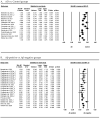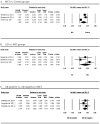GFAP as a Potential Biomarker for Alzheimer's Disease: A Systematic Review and Meta-Analysis
- PMID: 37174709
- PMCID: PMC10177296
- DOI: 10.3390/cells12091309
GFAP as a Potential Biomarker for Alzheimer's Disease: A Systematic Review and Meta-Analysis
Abstract
Blood biomarkers have been considered tools for the diagnosis, prognosis, and monitoring of Alzheimer's disease (AD). Although amyloid-β peptide (Aβ) and tau are primarily blood biomarkers, recent studies have identified other reliable candidates that can serve as measurable indicators of pathological conditions. One such candidate is the glial fibrillary acidic protein (GFAP), an astrocytic cytoskeletal protein that can be detected in blood samples. Increasing evidence suggests that blood GFAP levels can be used to detect early-stage AD. In this systematic review and meta-analysis, we aimed to evaluate GFAP in peripheral blood as a biomarker for AD and provide an overview of the evidence regarding its utility. Our analysis revealed that the GFAP level in the blood was higher in the Aβ-positive group than in the negative groups, and in individuals with AD or mild cognitive impairment (MCI) compared to the healthy controls. Therefore, we believe that the clinical use of blood GFAP measurements has the potential to accelerate the diagnosis and improve the prognosis of AD.
Keywords: Alzheimer’s disease; GFAP; blood biomarker; cognitive impairment; glial fibrillary acidic protein.
Conflict of interest statement
The authors declare no conflict of interest.
Figures



References
Publication types
MeSH terms
Substances
LinkOut - more resources
Full Text Sources
Medical
Miscellaneous

